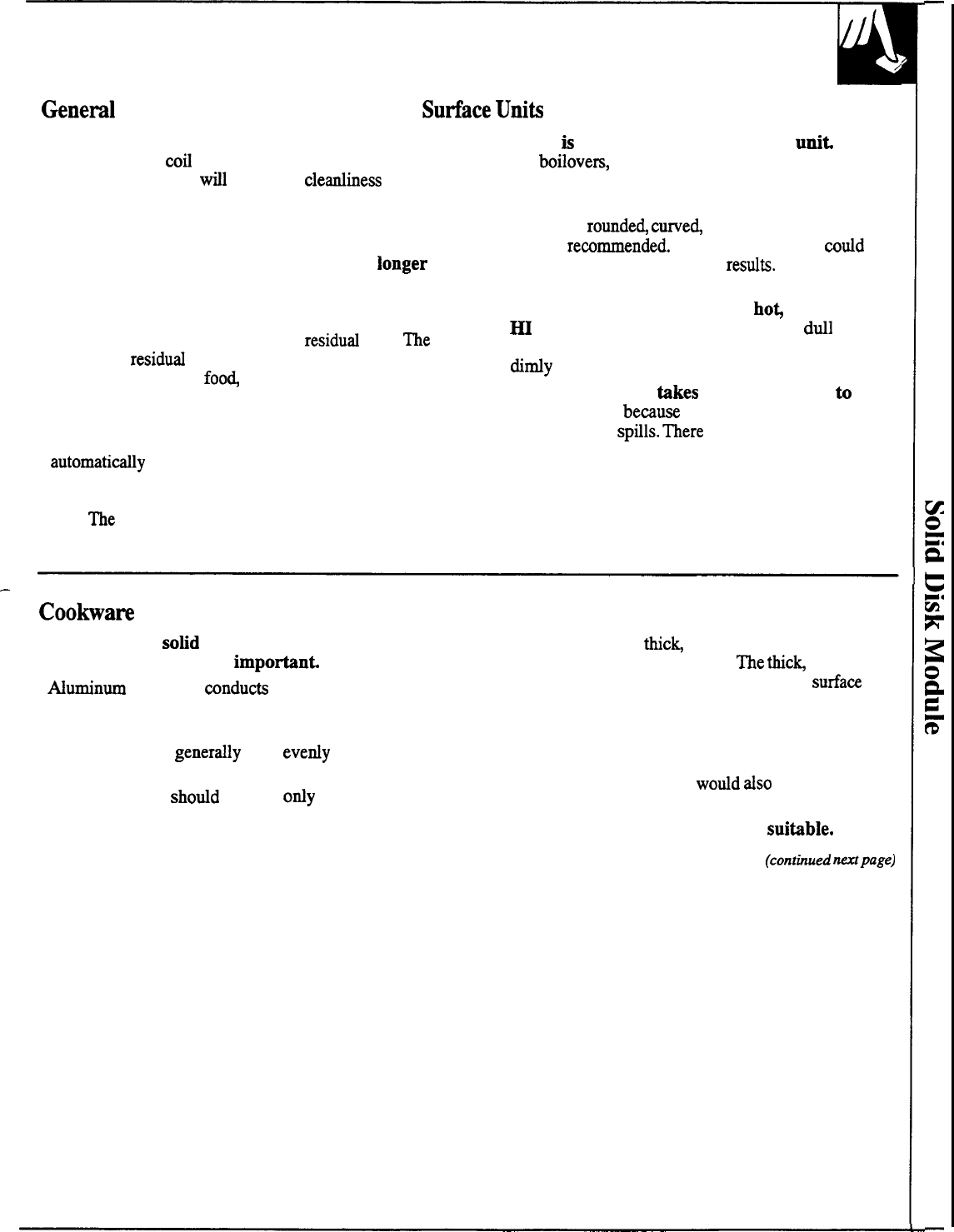
&neml
Information About Solid Disk
Sufiace
Uni@
Using a solid disk surface unit is quite similar to
using an electric
cofl
surface unit. With both types
of surface units, you
wfil
enjoy the
cleardiness
of
electricity and the benefits of retained heat in the
units. However, there are differences:
●
Solid disk surface units reach cooking
temperature a little slower, and hold heat
longer
than coil units. Solid disk surface units have very
even heat distribution. Since solid disk surface units
hold heat longer, you may wish to turn the unit off
sooner, and take advantage of the
residud
heat.
me
amount of
residud
heat is dependent upon the
quantity and type of
foo~ the material and thickness
of the pan and the setting used for cooking.
●
The red dot in the center of the solid disk surface
unit indicates built-in temperature limiters that
automatidly
reduce the heat if a pan boils dry, if
the unit is turned on without a pan or if the pan is
not making enough contact with the surface of the
unit.
The
red dots will wear off with use without
affecting the performance of the surface units.
● There
k
retained heat in the surface
unit
On
boilovers,
wait for the unit to cool before
cleaning the surface unit area.
● You must use proper flat bottomed cookware.
Pans with
rounde~
curved
ridged or warped bottoms
are not
remrnmended.
Improper cookware
codd
cause unsatisfactory cooking restits.
● Unlike electric coil surface units, solid disk
surface units do NOT turn red
ho~ even at the
~
setting. However, you may notice a
dtil
glow
when the surface units are on HI and the room is
didy
lit.
● Solid disk cooking
tikes
you a step closer
to
easier cleanup
beause
the cooking surface is
sealed against
sptils.
mere
are no drip pans or
burner boxes to clean.
—
Cooham
Tips
For cooking on
sohd
disk surface units the use of
correct cookware is very
importan~
●
Aurninum
cookware
mnducts
heat faster than
other metals.
●
Cast-iron and coated cast-iron containers are slow to
absorb heat, but
generrdly
cook
evedy
at minimum
or medium heat settings.
●
Glass cookware
shodd
be used
ordy
as the
manufacturer describes.
●
Do not use a wire trivet or any other kind of
heat-retarding pad between the cookware and the
surface unit.
●
Good pans have a thick flat bottom which absorbs
the heat from the surface unit.
me
thick flat bottom
provides good heat distribution from the
surfaw
unit
to the food.
●
Pans with thin, uneven bottoms do not do a good
job of using the heat coming from the surface unit.
The food to be cooked may bum and require more
time and electricity. You
wodd
dso
have to add
more fat or water.
Pans with uneven bottoms are not
suitible.
(conttiued
n~page)
13


















